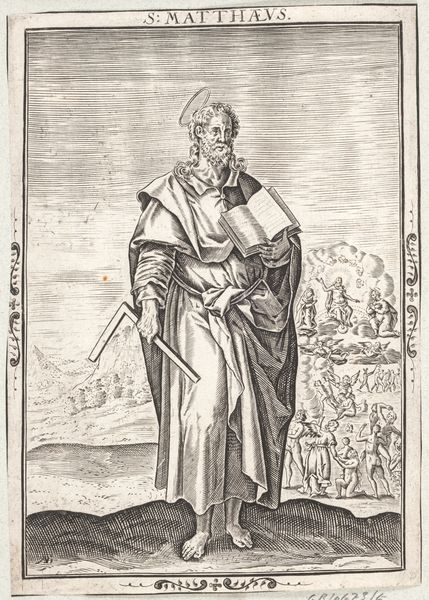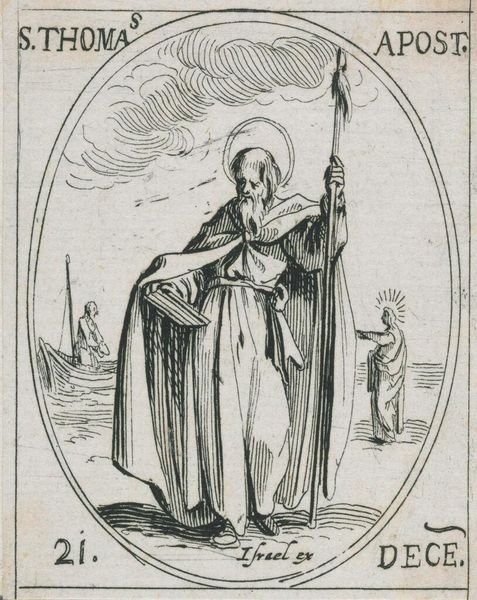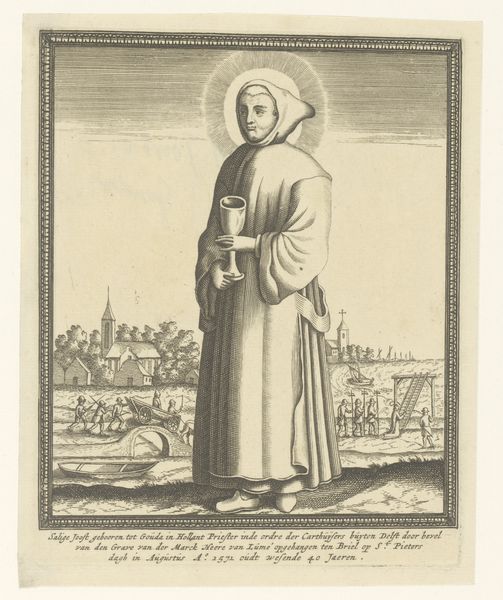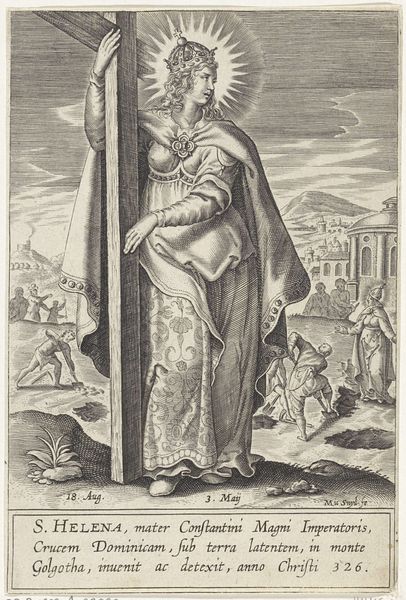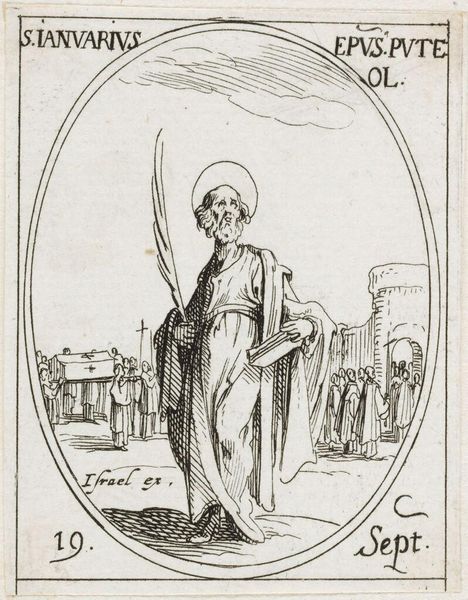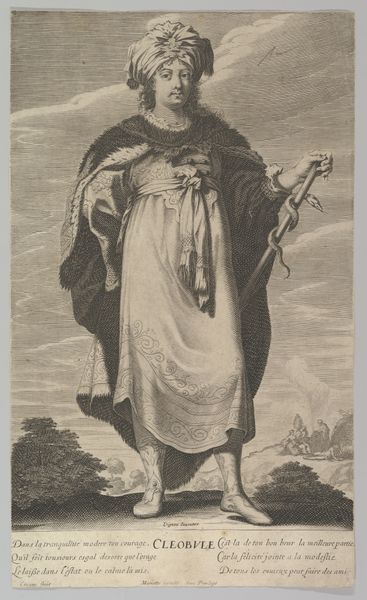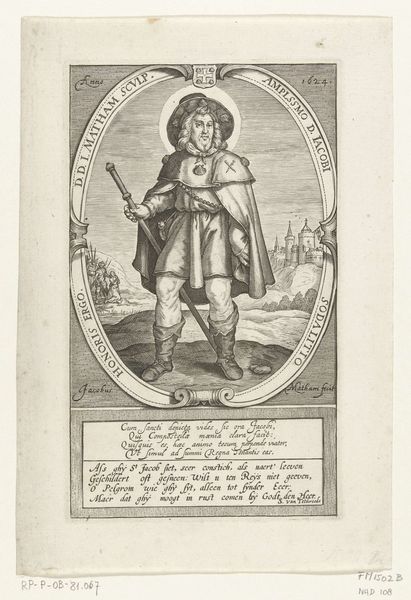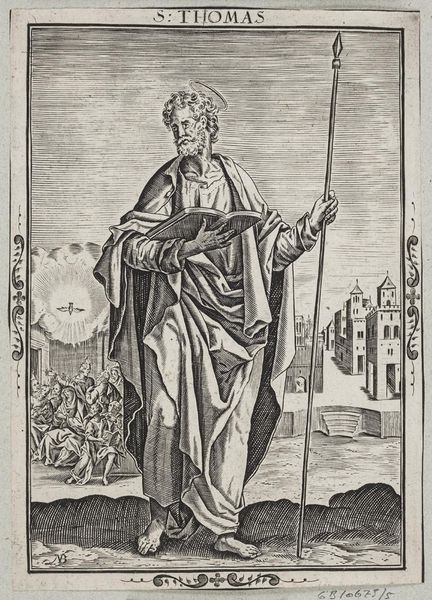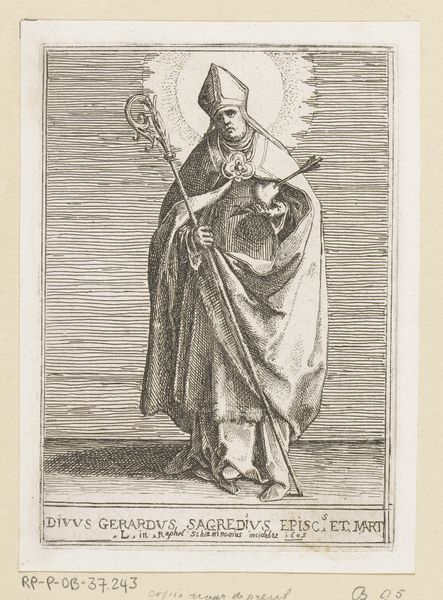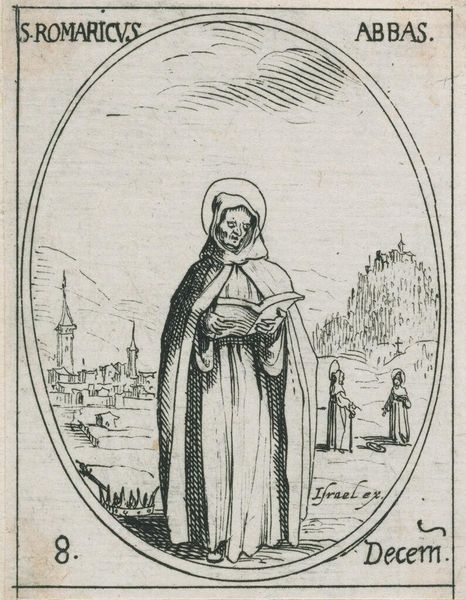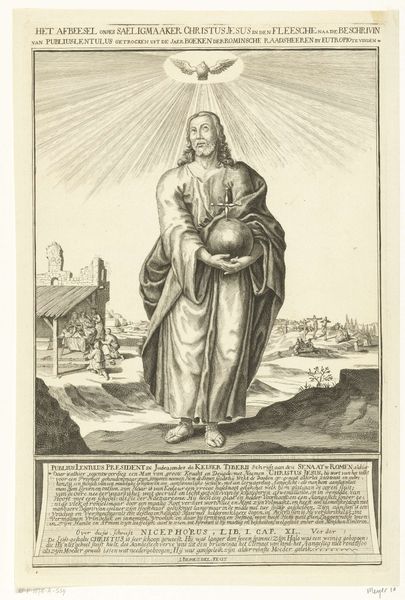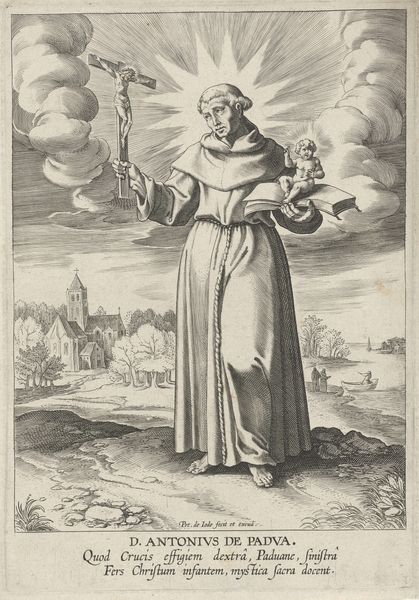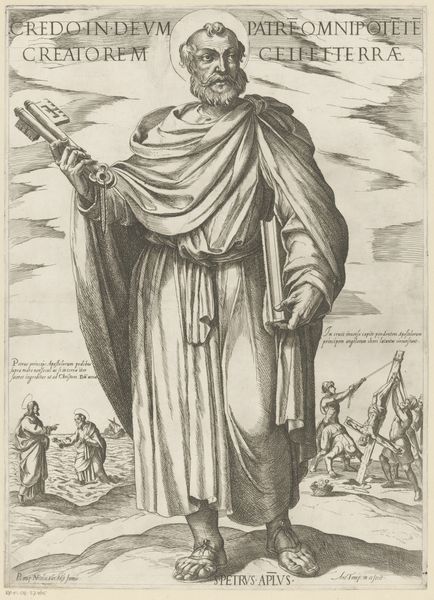
print, engraving
#
portrait
#
baroque
# print
#
old engraving style
#
figuration
#
line
#
history-painting
#
engraving
Dimensions: width 165 mm, height 205 mm
Copyright: Rijks Museum: Open Domain
Curator: This is “Heilige Johannes van Capestrano,” an engraving by Johannes Sadeler II, dating back to 1614. The meticulous lines used in the printmaking process result in an incredibly detailed image. Editor: It definitely feels crowded, with the saint in the foreground and this massive battle scene behind him. How do you even begin to interpret something like this? Curator: Let's focus on the material reality of the print itself. Think about the process of engraving: the labor, the tools, the reproduction of imagery. The artist is acting as a craftsman but he's creating and representing at the same time, mediating between a cultural and political environment in Europe. Look at how Sadeler meticulously details Saint John's robes and the chaotic battle raging behind him. What does the choice of the engraving medium itself tell us about the social function of the artwork? Editor: Well, engravings allowed for mass production and distribution, so this image could reach a wide audience, wasn’t it? It’s like using images as propaganda to spread particular messages in Early Modern Europe? Curator: Precisely. Engravings made the subject accessible. The material choices reflect the intention. What's interesting is that the print can be regarded as both 'high art', yet serves what we now consider a populist, almost journalistic, function. Do you notice any further contradiction between form and content? Editor: The linear quality gives the chaotic battle scene some order, almost like a pattern; so, what seems disturbing at first also feels ornamental. I’d never thought about prints this way – not just the image but the actual materials of the piece that communicate just as much. Curator: Indeed! Focusing on material process unveils new avenues for understanding not just the image, but the context within which the print circulated.
Comments
No comments
Be the first to comment and join the conversation on the ultimate creative platform.
